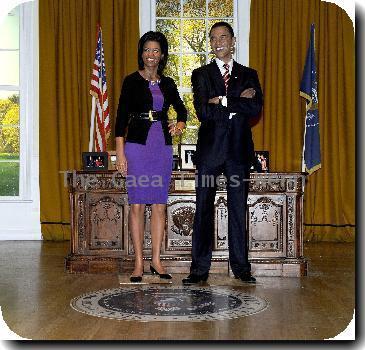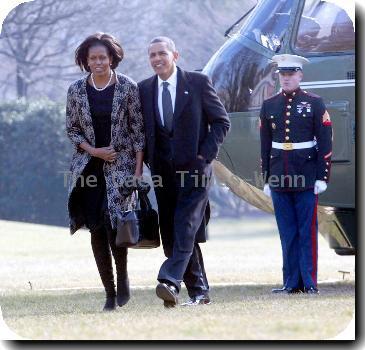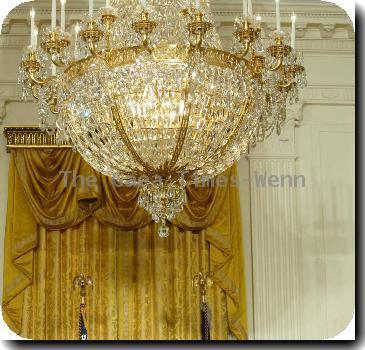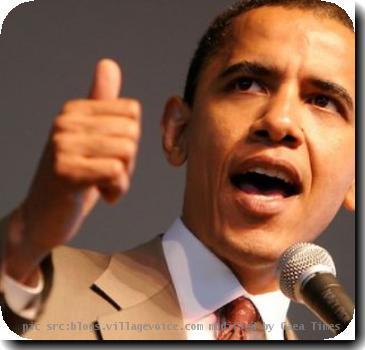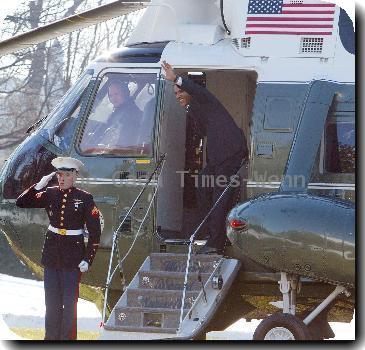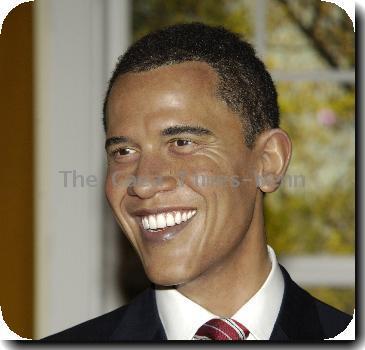Close to heavily guarded border fence, pair of tiny Rio Grande bridges allow passage to US
By Alicia A. Caldwell, APThursday, August 19, 2010
Unguarded border bridges could be route into US
ACALA, Texas — On each side of a towering West Texas stretch of the $2.4 billion border fence designed to block people from illegally entering the country, there are two metal footbridges, clear paths into the United States from Mexico.
The footpaths that could easily guide illegal immigrants and smugglers across the Rio Grande without getting wet seem to be there because of what amounts to federal linguistics. While just about anyone would call them bridges, the U.S.-Mexico group that owns them calls them something else.
“Technically speaking it’s not a bridge, it’s a grade control structure,” said Sally Spener, spokeswoman for the International Boundary and Water Commission, which maintains the integrity of the 1,200-mile river border between the U.S. and Mexico. The structures under the spans help prevent the river — and therefore the international border — from shifting.
Spener said the river was straightened years ago to stabilize and prevent a shift during high river flow. Without the structures, which also help slow the flow of water in the river, she said it could erode its banks, wash out the river bed and degrade natural habitats.
Whatever they’re called, there are fresh sneaker tracks on the structures — indicating they’re being used as passages into the country.
After a private meeting with Rio Grande Valley police chiefs Thursday, Texas Gov. Rick Perry said news of the unsecured footbridges did not surprise him.
“This is a long border,” Perry said. “It’s been discouraging that there’s something as obvious (as the bridges) and the federal government hasn’t addressed it.”
The realization that a section of the border fence is sandwiched between two footbridges comes at a time of heightened alarm along the U.S.-Mexico border as the drug war in northern Mexico continues unabated. President Barack Obama ordered thousands of National Guard troops to the border but Perry has railed that the federal government isn’t doing enough to keep Americans safe and illegal immigrants out.
The steel fencing that dots about 600 miles of border in Texas, New Mexico, Arizona and California was built under former President George W. Bush’s administration amid a national outcry for border security. The steel fencing appears in urban areas, while more rural areas have shorter, concrete vehicle barriers.
“If we are spending so much money on a fence, why not put some into cutting (the bridges) out, eliminating an easy access at a place that is not a port?” said Don Reay, executive director of the Texas Border Sheriff’s Coalition.
The footbridges were built in the 1930s as part of a treaty with Mexico, Spener said.
On a recent visit to a bridge west of the fence line near Acala, Border Patrol Special Operations Supervisor Ramiro Cordero spotted an hours-old adult-sized sneaker print in the soft sand at the foot of the bridge facing into the United States.
In a border tour with the Hudspeth County Sheriff’s Office in March, Associated Press journalists happened upon the bridge moments after a man with a bicycle used the bridge to cross the river from Mexico. The border crosser, who told authorities he was only trying to fish from the north side of the river, was promptly arrested.
“If he can do it, so can drug cartels with loads of narcotics of any kind,” Hudspeth County Sheriff’s Lt. Robert Wilson said. “Even a terrorist could pass here with weapons of mass destruction and be in the United States and up on the interstate and gone in a short time.”
It’s unclear how often the bridge is used, but it’s common to see people on the Mexican side lingering around the crossing or others playing in the river in the area.
The bridges may have made sense decades ago when they were built, Wilson said, but times have changed and the once quiet area across the border from rural Hudspeth County has been enveloped in Mexico’s drug war.
Cartel fighters have overrun a series of small towns in the Valle de Juarez, about 50 miles east of Ciudad Juarez, ground zero in the bloody drug war. Residents have been forced to flee north to Fort Hancock after cartel fighters burned down houses, tried to torch a local Catholic church and threatened to kill anyone who stayed.
“It made a lot of sense for flood control when the boundary commission built them,” Wilson said. “Now with the way things have progressed, it’s pretty silly there are no controls here.”
Cordero insists agents in the area pay close attention to the bridges and other areas easily crossed on foot or by car. He said there also are numerous underground sensors around the bridges that alert agents to area traffic.
But patrols in such an open area can appear to be sporadic to the average observer as marked Border Patrol trucks cruise up and down a river levee road along the border.
The crossings are owned by both the United States and Mexico and are needed for workers to maintain and occasionally fix cement structures that support the bridge, Spener said. Any changes to the structures, she said, would have to be approved by officials in both countries. And no one has ever asked to secure the bridges or remove them, she said.
“We would be happy to work with Border Patrol if they have security concerns they’ve identified,” Spener said. “It would be a challenge, but we’d be happy to discuss it.”
Cordero said he’s not aware of any requests by Border Patrol or the Department of Homeland Security to secure the crossings. But still, he concedes, it would be nice if there was more security around the remote crossing.
“Obviously this is where technology and the experience of our agents comes into play,” Cordero said. “Do we have to pay more attention here? Yes, because we’re talking seconds that they can get in.”
Tags: Acala, Barack Obama, Border Security, Central America, Drug-related Crime, Latin America And Caribbean, Mexico, North America, Organized Crime, Texas, United States
